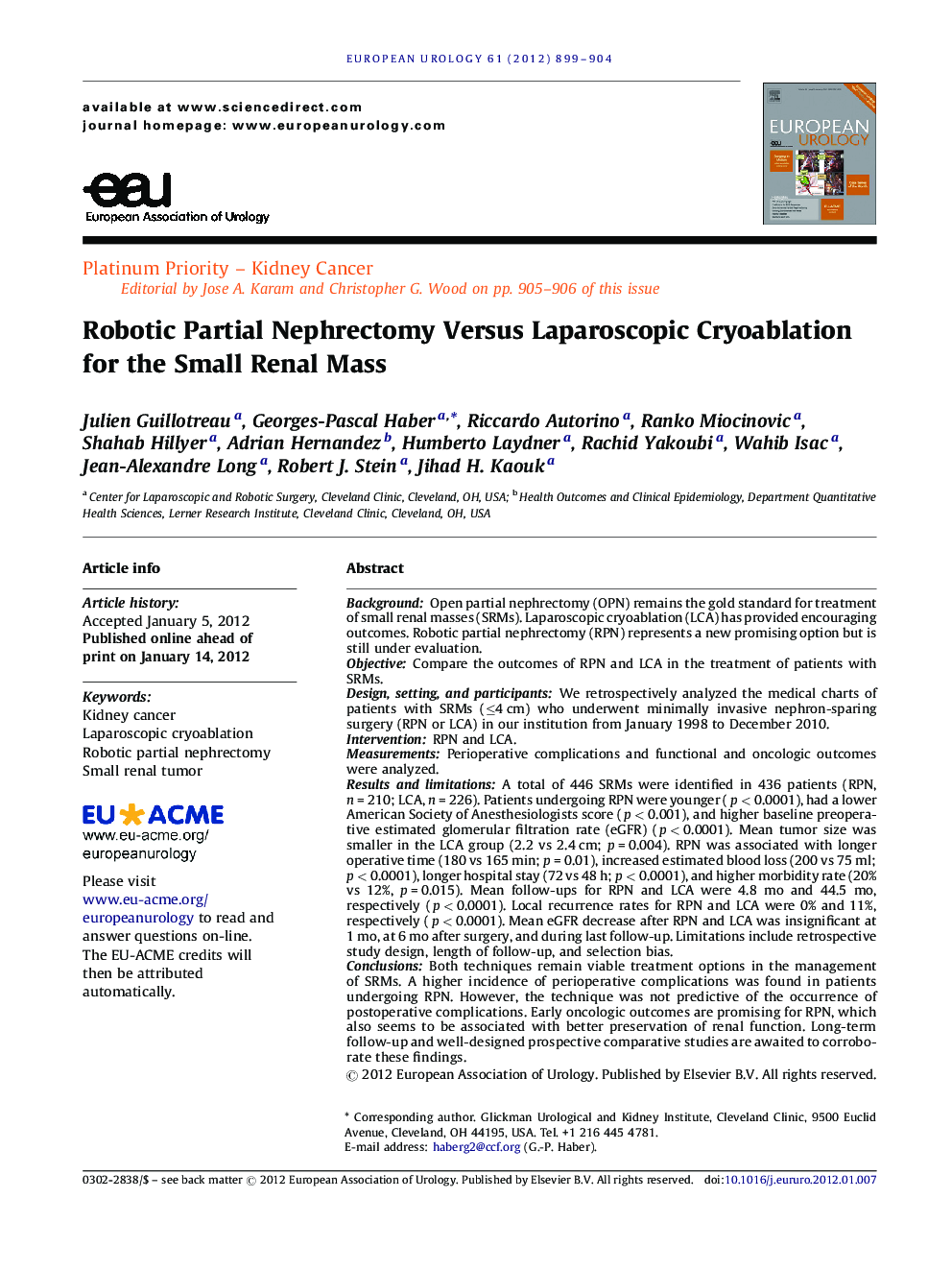| کد مقاله | کد نشریه | سال انتشار | مقاله انگلیسی | نسخه تمام متن |
|---|---|---|---|---|
| 3924200 | 1253097 | 2012 | 6 صفحه PDF | دانلود رایگان |

BackgroundOpen partial nephrectomy (OPN) remains the gold standard for treatment of small renal masses (SRMs). Laparoscopic cryoablation (LCA) has provided encouraging outcomes. Robotic partial nephrectomy (RPN) represents a new promising option but is still under evaluation.ObjectiveCompare the outcomes of RPN and LCA in the treatment of patients with SRMs.Design, setting, and participantsWe retrospectively analyzed the medical charts of patients with SRMs (≤4 cm) who underwent minimally invasive nephron-sparing surgery (RPN or LCA) in our institution from January 1998 to December 2010.InterventionRPN and LCA.MeasurementsPerioperative complications and functional and oncologic outcomes were analyzed.Results and limitationsA total of 446 SRMs were identified in 436 patients (RPN, n = 210; LCA, n = 226). Patients undergoing RPN were younger (p < 0.0001), had a lower American Society of Anesthesiologists score (p < 0.001), and higher baseline preoperative estimated glomerular filtration rate (eGFR) (p < 0.0001). Mean tumor size was smaller in the LCA group (2.2 vs 2.4 cm; p = 0.004). RPN was associated with longer operative time (180 vs 165 min; p = 0.01), increased estimated blood loss (200 vs 75 ml; p < 0.0001), longer hospital stay (72 vs 48 h; p < 0.0001), and higher morbidity rate (20% vs 12%, p = 0.015). Mean follow-ups for RPN and LCA were 4.8 mo and 44.5 mo, respectively (p < 0.0001). Local recurrence rates for RPN and LCA were 0% and 11%, respectively (p < 0.0001). Mean eGFR decrease after RPN and LCA was insignificant at 1 mo, at 6 mo after surgery, and during last follow-up. Limitations include retrospective study design, length of follow-up, and selection bias.ConclusionsBoth techniques remain viable treatment options in the management of SRMs. A higher incidence of perioperative complications was found in patients undergoing RPN. However, the technique was not predictive of the occurrence of postoperative complications. Early oncologic outcomes are promising for RPN, which also seems to be associated with better preservation of renal function. Long-term follow-up and well-designed prospective comparative studies are awaited to corroborate these findings.
Journal: European Urology - Volume 61, Issue 5, May 2012, Pages 899–904